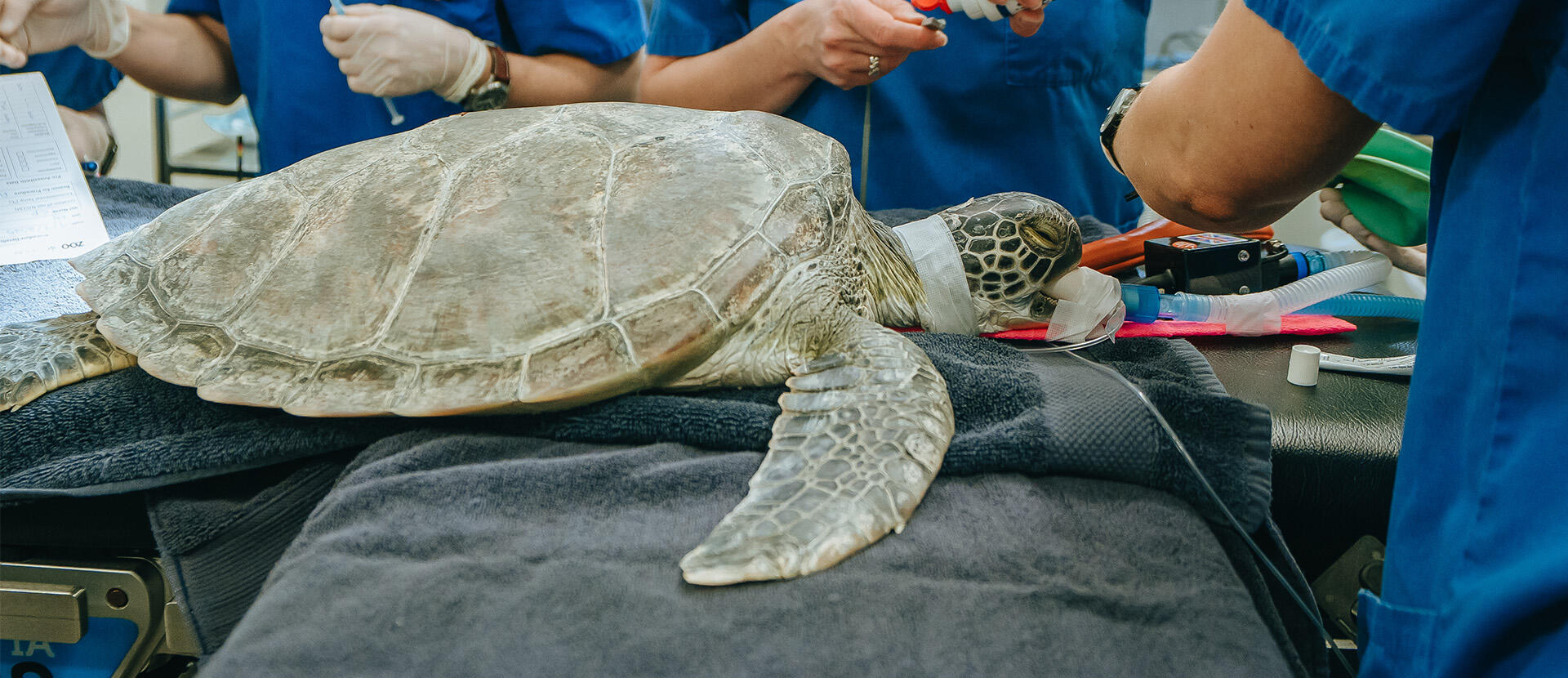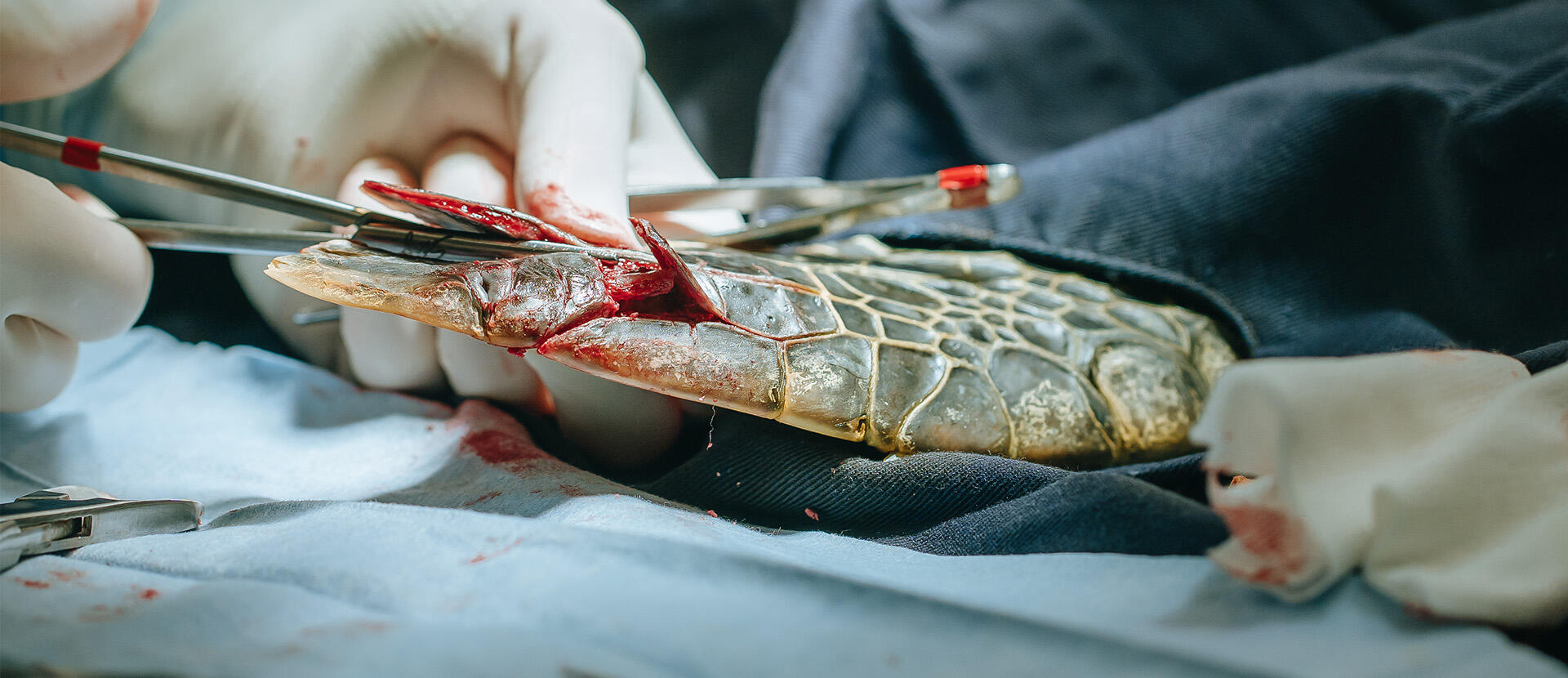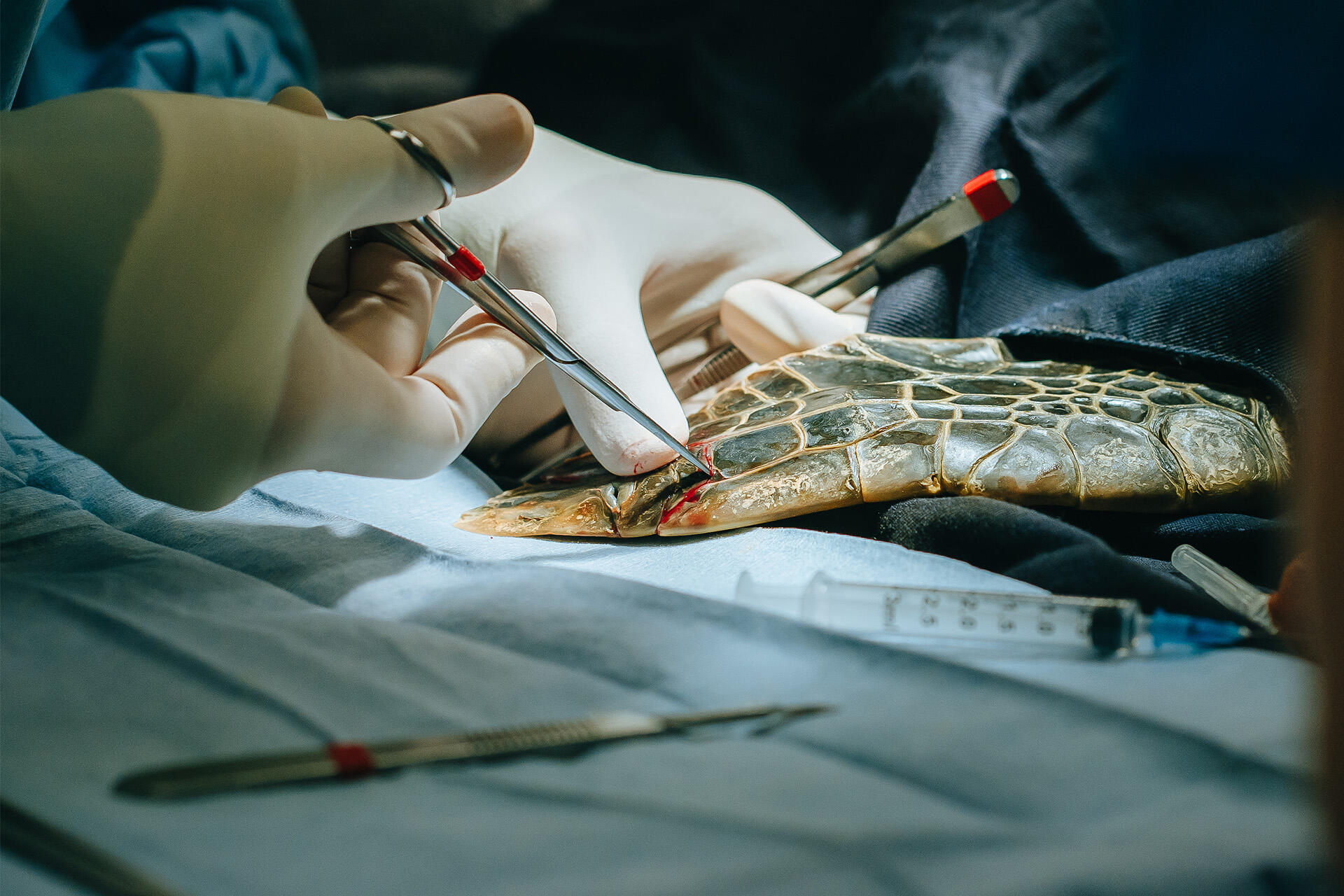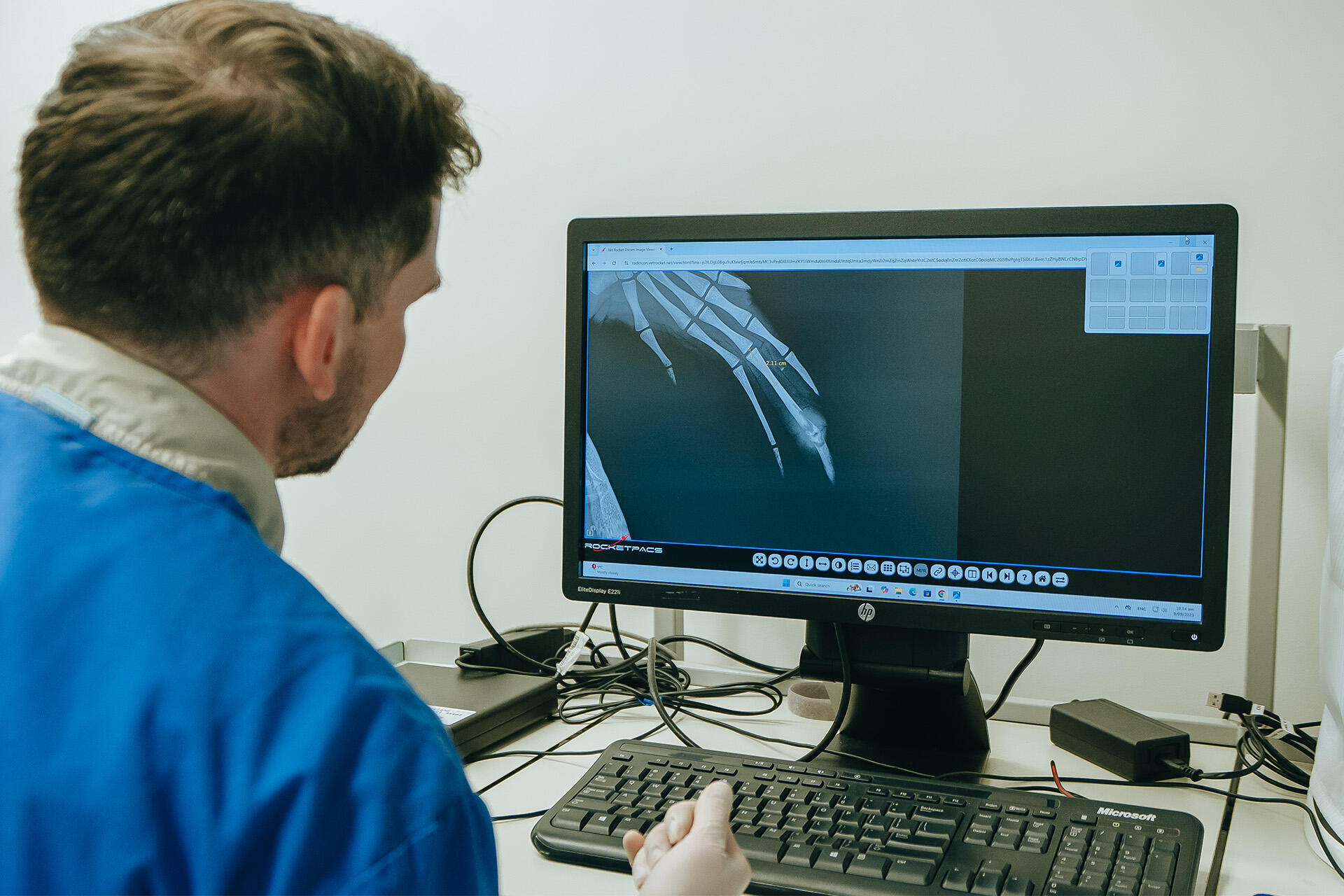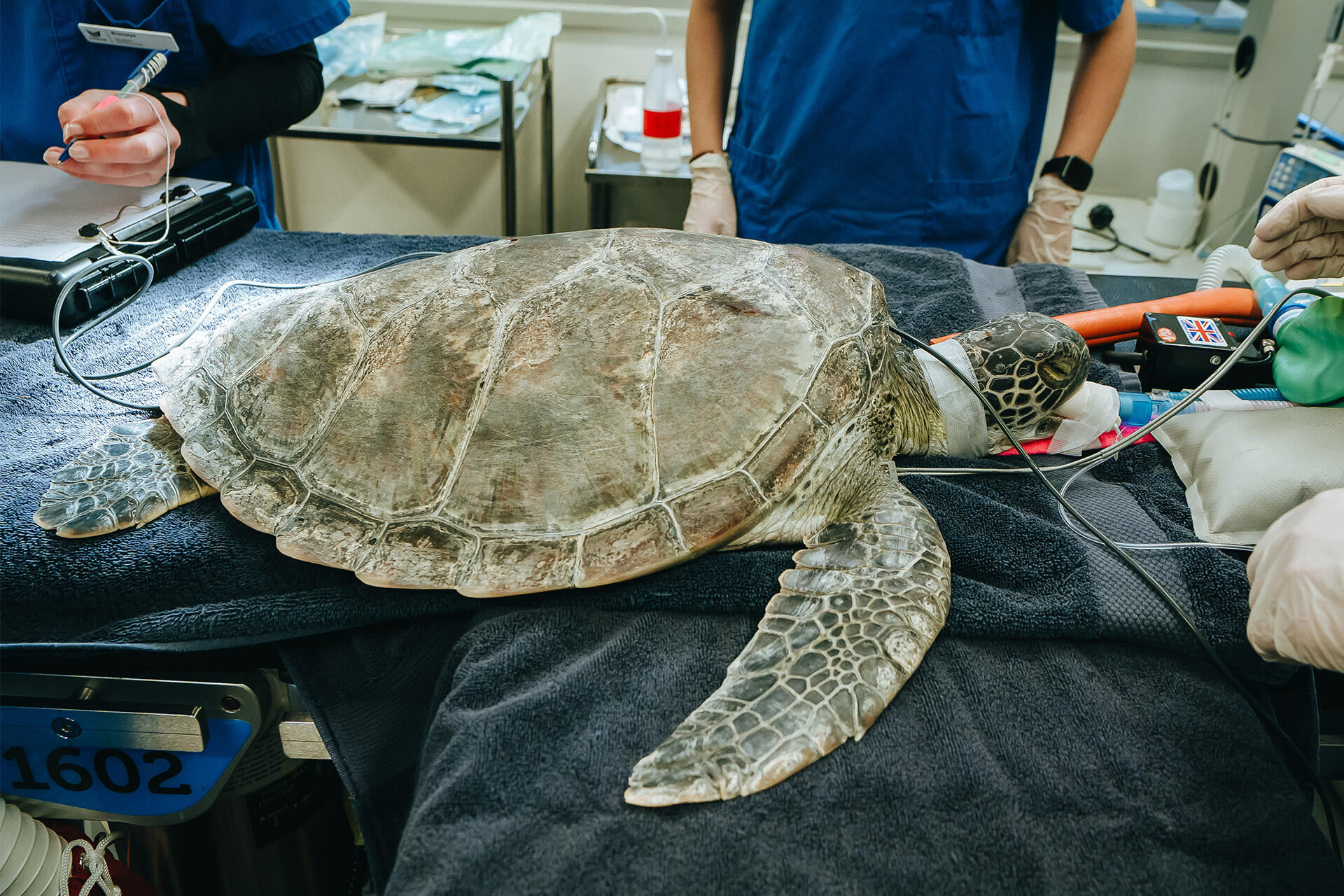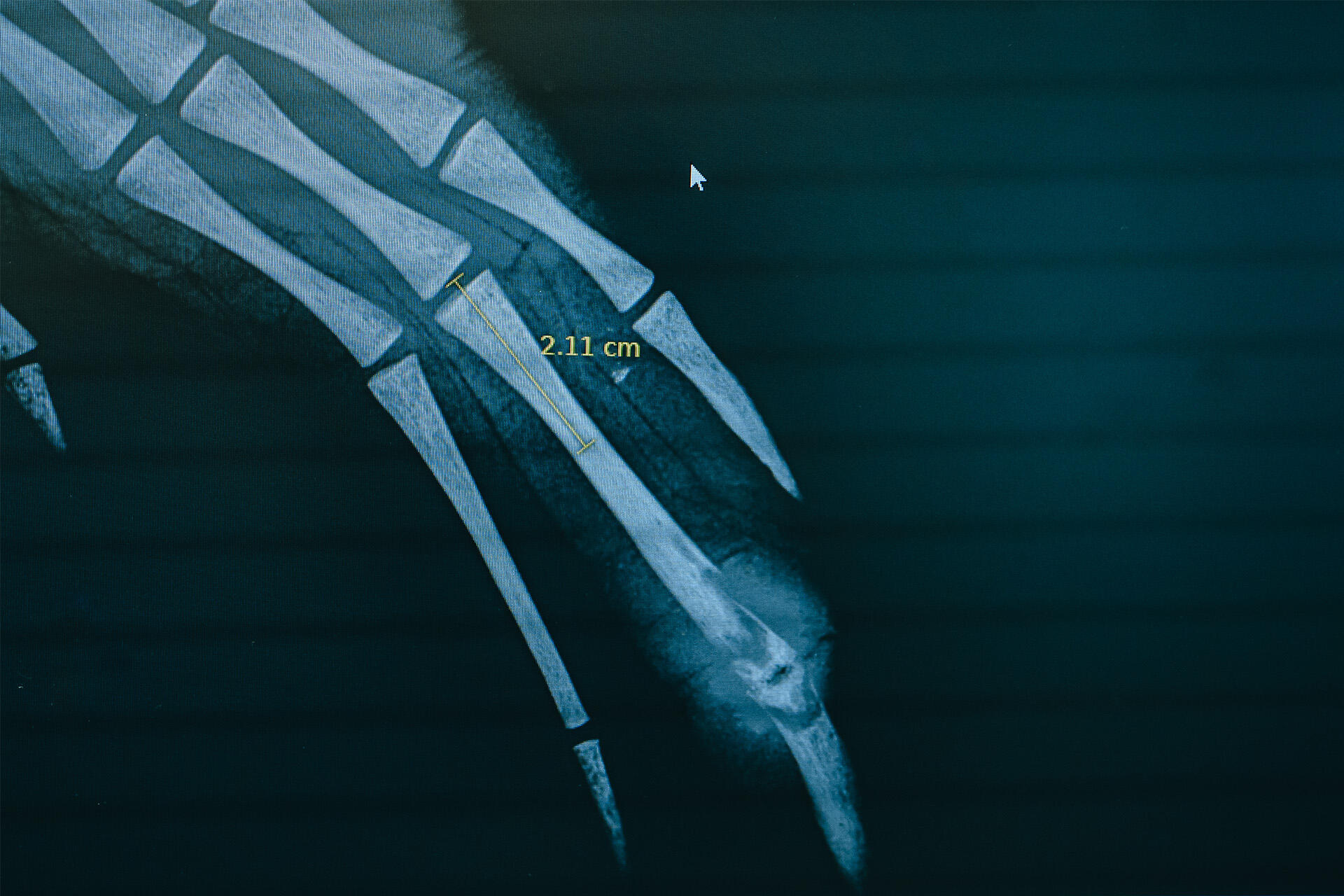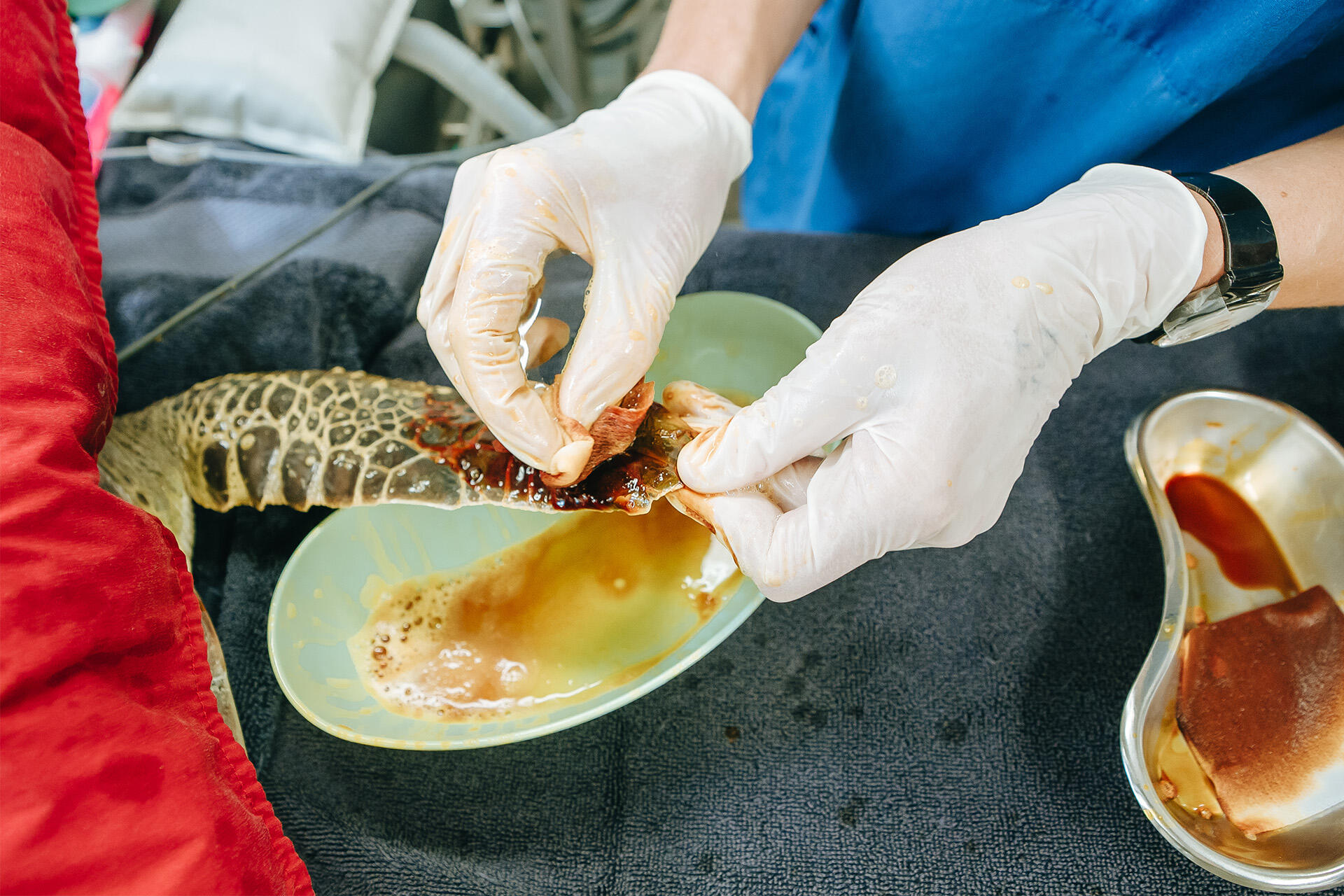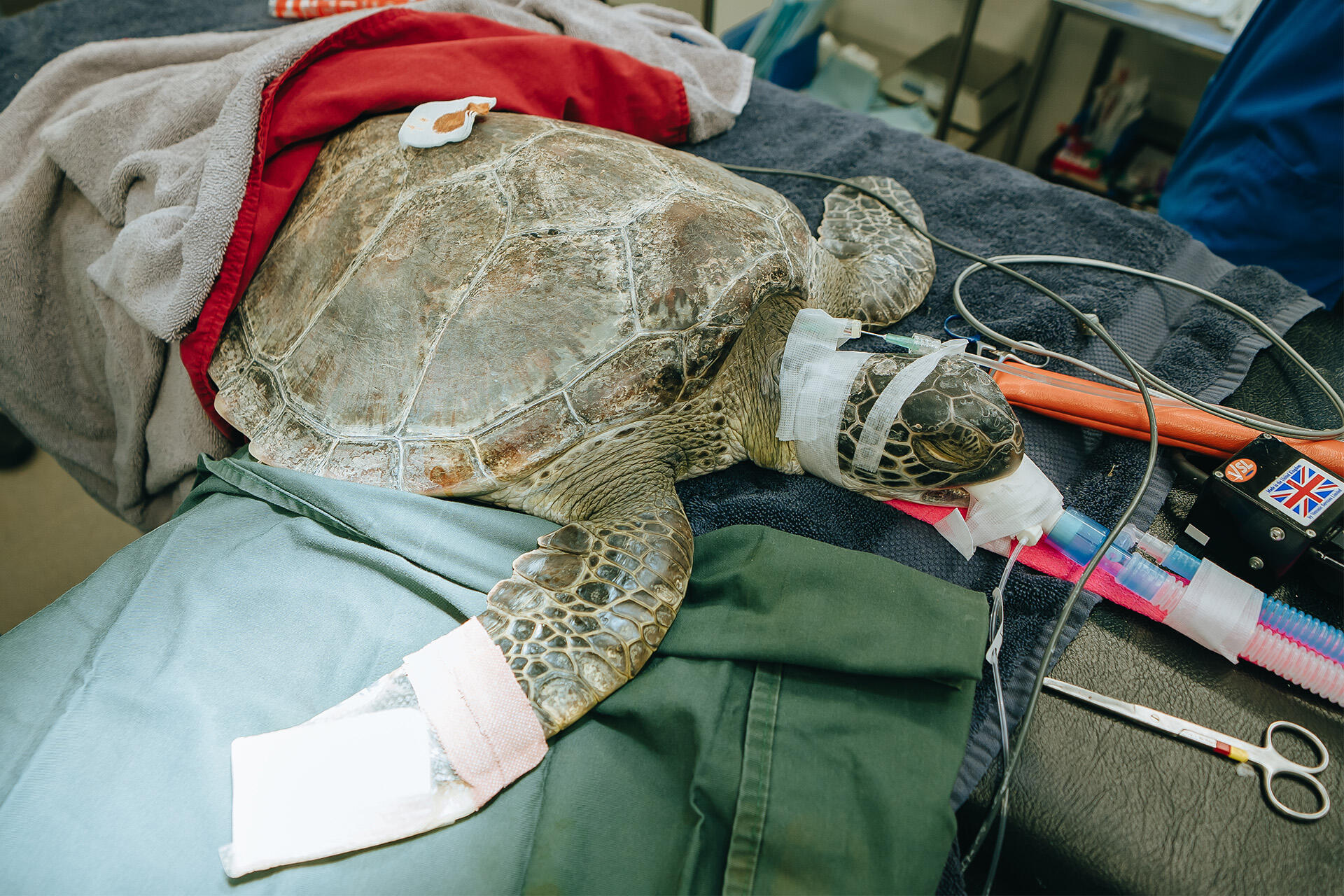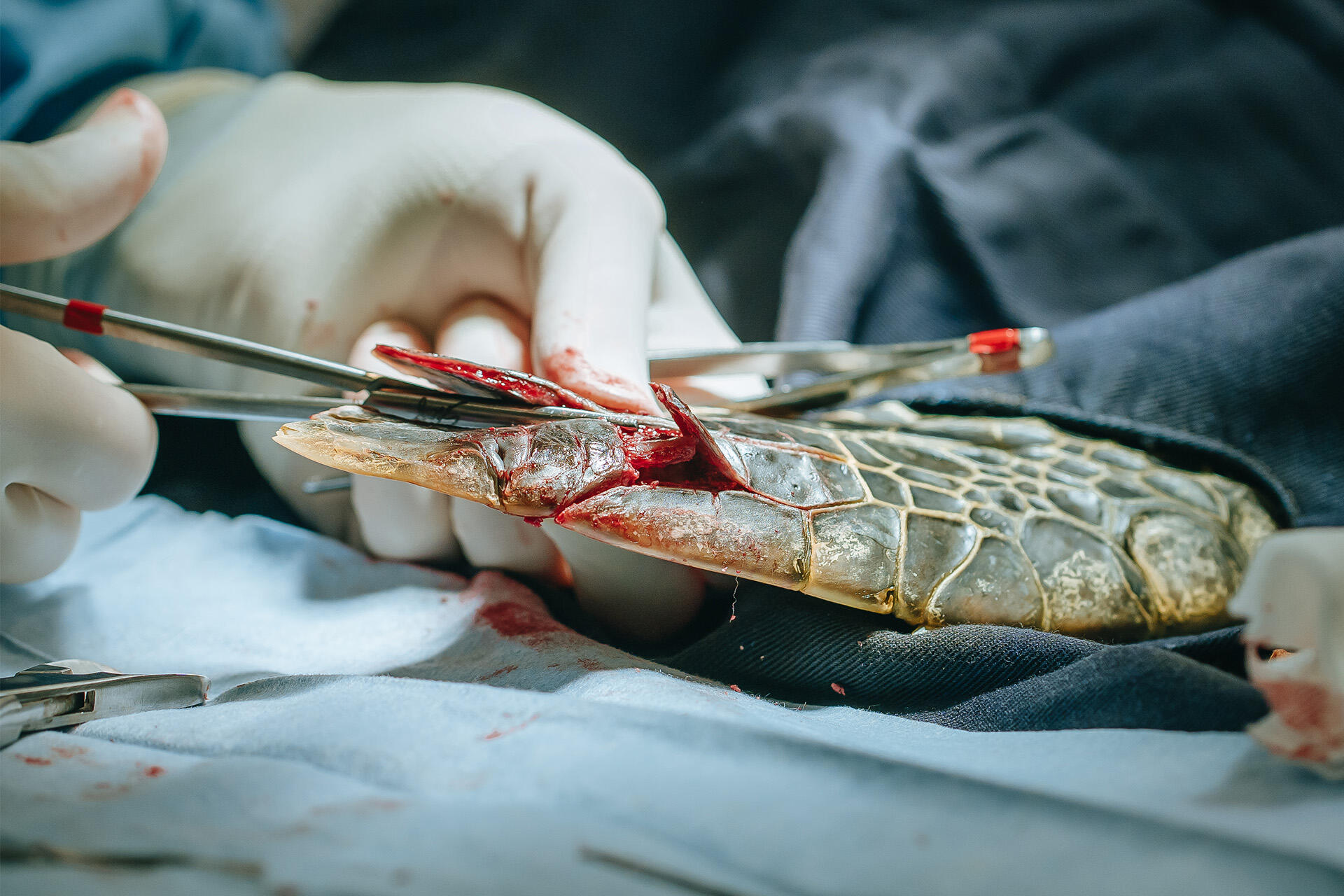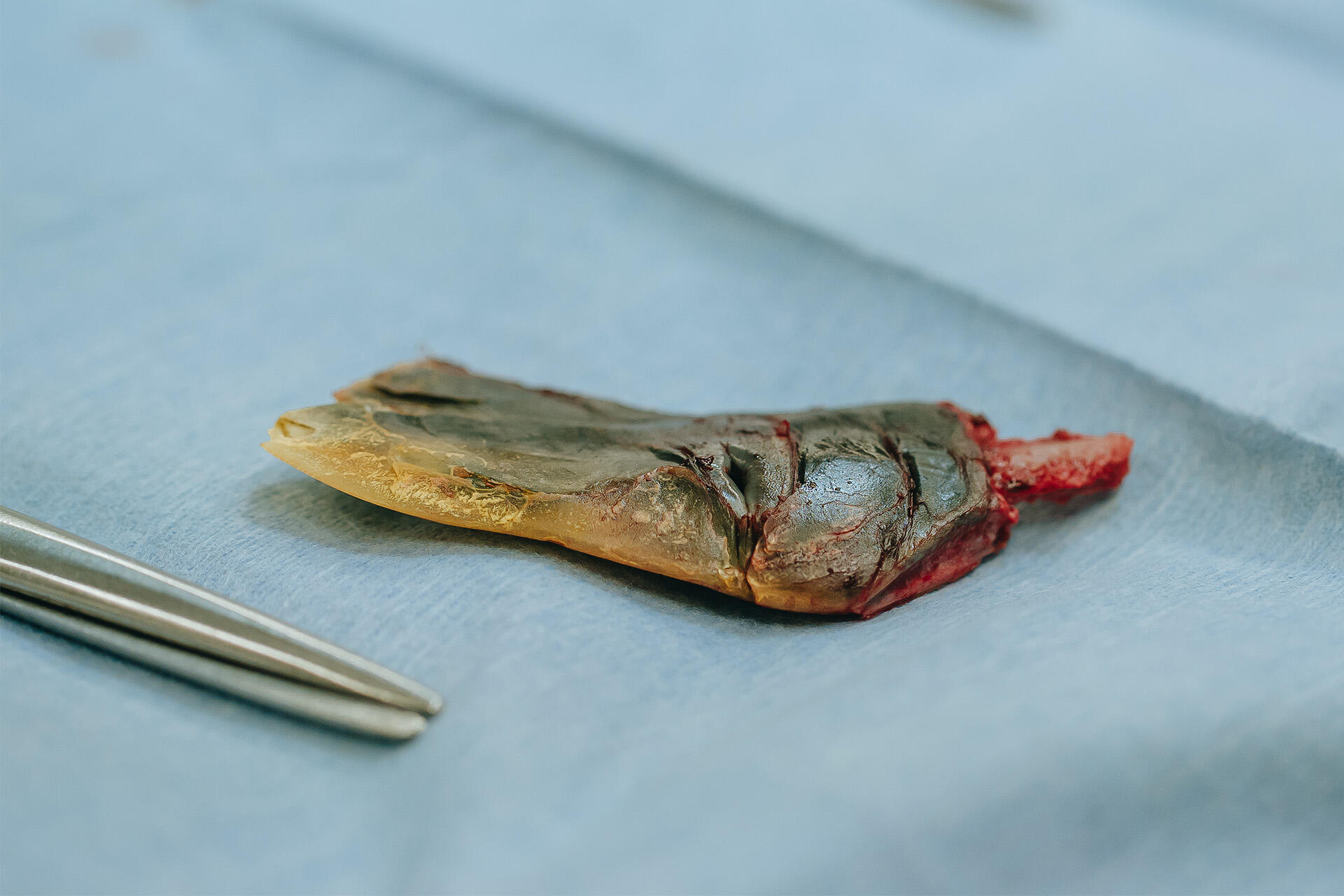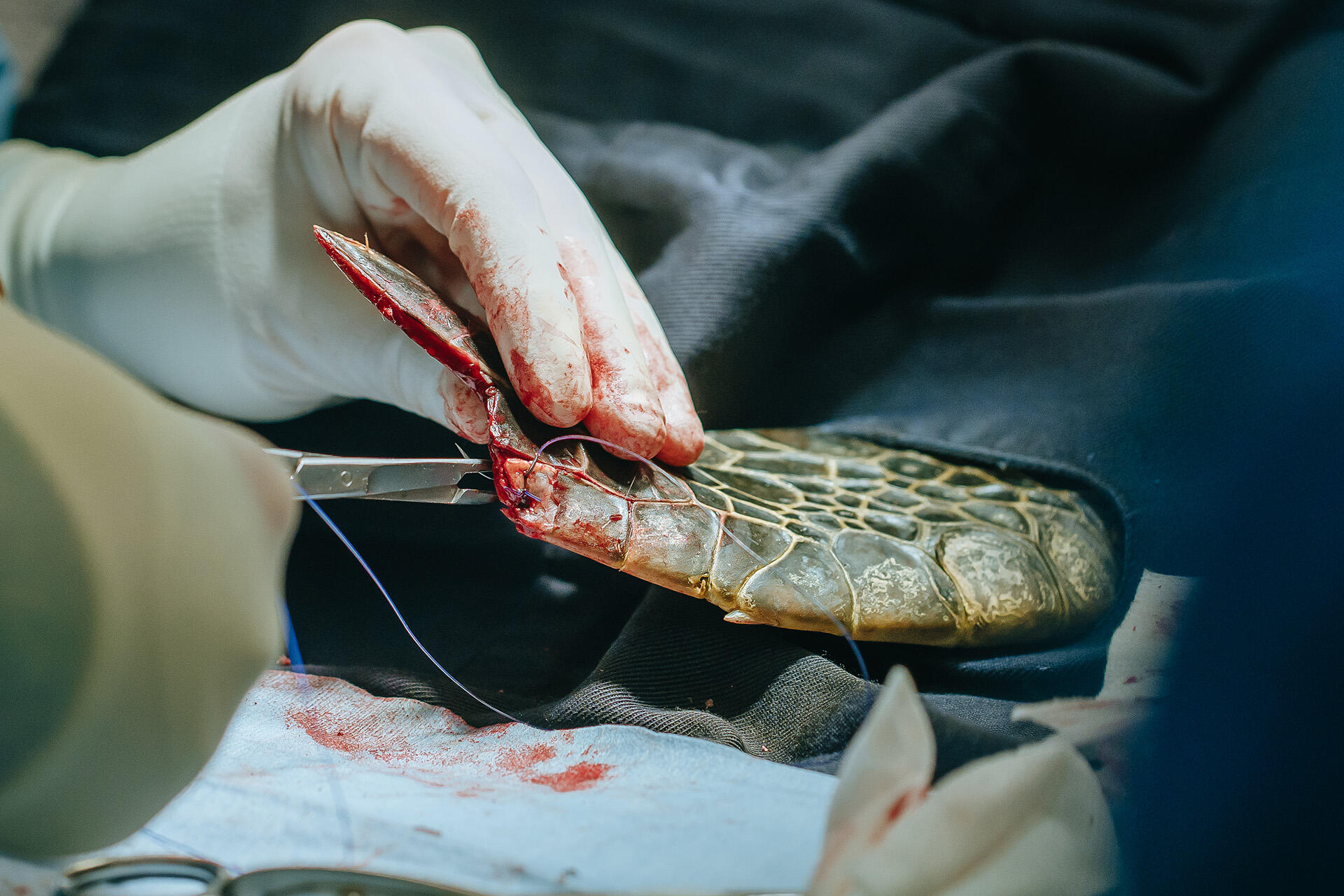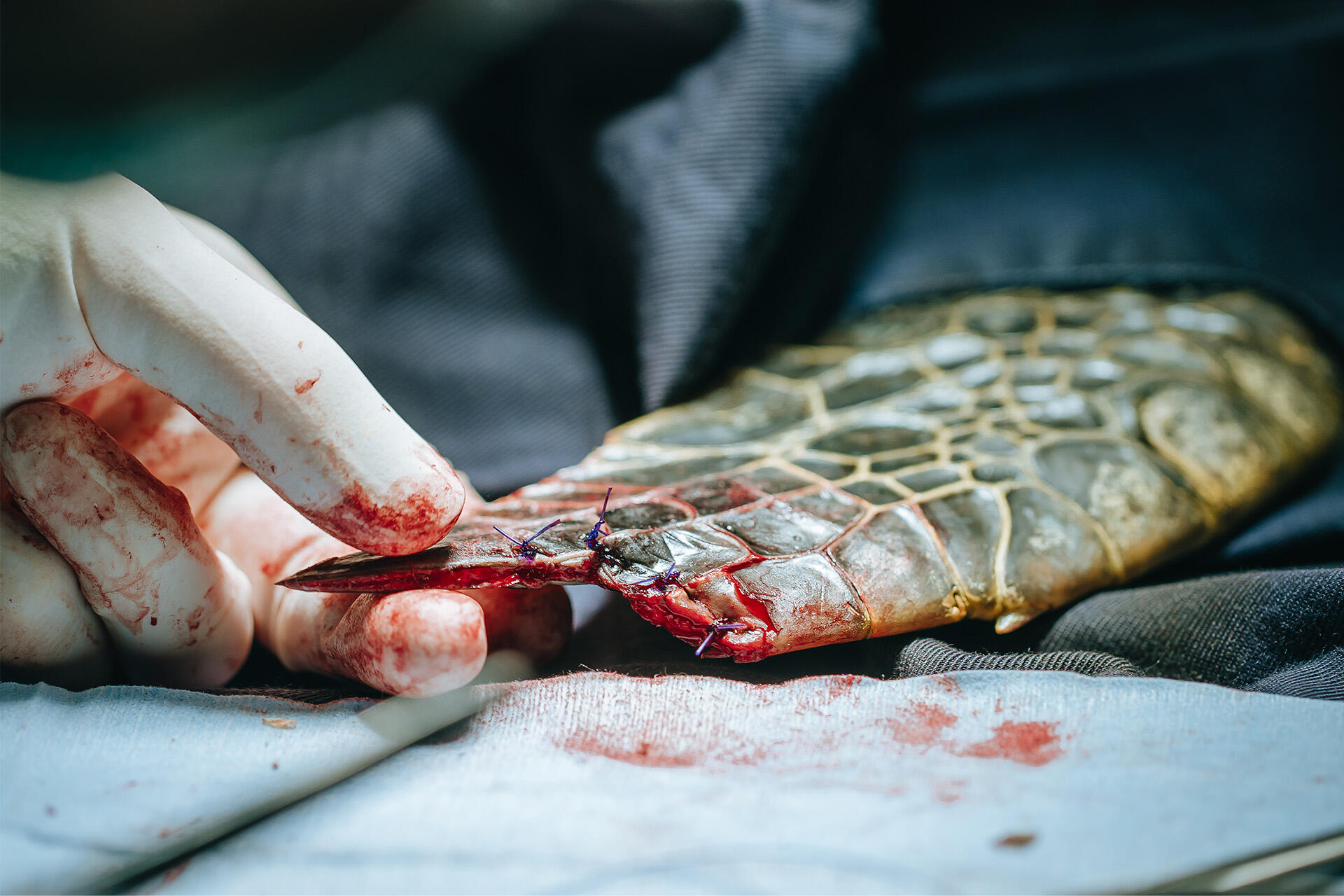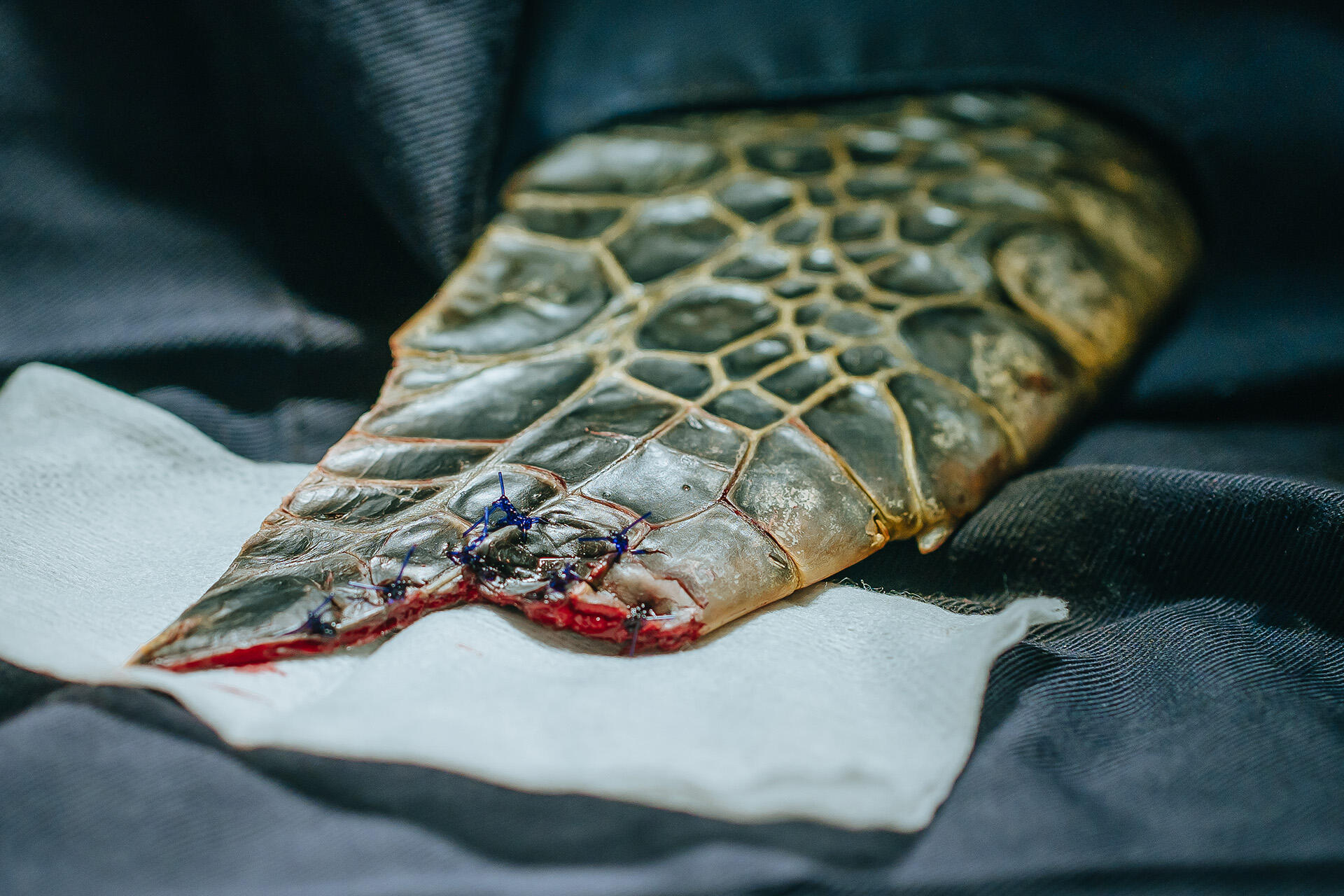In July this turtle was brought to our veterinary hospital by our partners at the Department of Conservation. At the initial assessment, our kaimahi noticed a small wound and mild swelling at the end of the right flipper. Subsequent X-rays revealed that the bone was deteriorating due to a serious infection known as osteomyelitis. Our team gave antibiotics as a first measure, but as the infection continued to spread, the best chance for the turtle’s recovery was surgery.
The flipper tip amputation was carefully planned and carried out by Zoo vet Adam and our team. Their aim was to remove the infection completely and preserve as much of the natural flipper shape as possible so the turtle could continue to swim effectively.
“The turtle came through the operation smoothly and recovered well from anaesthesia. While we’ll be closely monitoring for any signs of ongoing infection, the surgery is considered a success and the turtle still has a functional partial flipper. Sea turtles are incredible and in the wild they’re often seen thriving with more significant injuries,” explains Adam.
Last week, this sea turtle patient was transferred to our Team Turtle partners at SEA LIFE Kelly Tarlton’s, where we’re continuing to provide veterinary care. Once the sutures are removed and medications are no longer needed, it will graduate to a larger pool for the next stage in its rehabilitation journey.
It’s a long road to recovery but we’re hopeful that in the future this sea turtle can be released back into the ocean.


